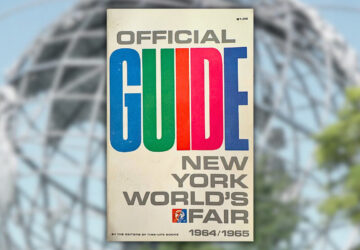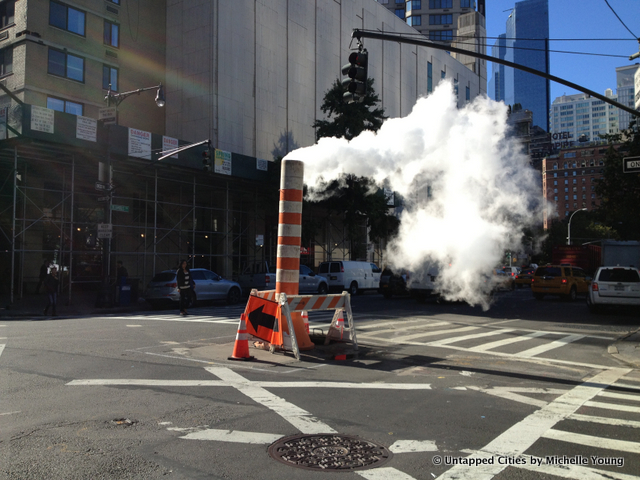“Living City: Where Does Our Trash Go?”
It should come as no surprise that the 8.4 million people of New York City produce waste. New Yorkers take trash pickup for granted; we get mad when they miss a day and are furious when they block the roads. But really, we’re lucky to have one of the most complex waste management system in North America and most of all, have it work for us. The city was unthinkably filthy before 1895, when Colonel George Waring began to improve NYC sanitation. Then, when ocean dumping became illegal Robert Moses, opened landfills and incinerators.
These landfills, mostly on Staten Island at Fresh Kills, eventually filled up, and today we export 85% of our waste to New Jersey, Pennsylvania, Virginia, and upstate New York. This video features Commissioner of the New York City Department of Sanitation, Kathryn Garcia, who explains that dealing with waste is a challenge but has recently offered her department opportunities as well. They realized that 35% of waste is actually organic material that the city is spending money to export to landfills. The sanitation department is developing a system already expanding in 4 boroughs to collect compostable material separately and bring it to a composting facility upstate. The new philosophy on waste, according to Dr. Robin Nagle, is “bury it or figure out how to reuse it.”
“Living City: Finally, A 2nd Avenue Subway”
The 2nd Avenue subway line has been a contentious issue since before the Great Depression. This video explains the challenges of the project, but also the huge benefits that everyone on the Upper East side will reap from its completion. The video starts with cool footage of blasting out rock walls to make way for the subway. The hardest challenge they face is that everything in this city is underground; sewage pipes, water, gas, electric power lines, etc. Working around these issues, and the process of building something out of solid rock, is causing problems for business owners along 2nd Avenue who are losing lots of business since their storefronts are not visible behind construction.
“Living City: A City Shaped by Steam”
There are 105 miles of steam pipes in New York City that power around 2000 buildings, of which the 300 largest are more than half a million square feet large. This video explains the steam systems beneath our streets, put underground to avoid a skyline of chimneys and to reduce soot from coal-burning chimneys when skyscrapers were going up in the late 19th century and early 20th century. Now in the 21st century, Con Edison maintains the largest steam system in the world, a cleaner source of energy for NYC. This mini-documentary calls on museums, restaurants, historians, private executives, and city officials to share their experiences with this unique system that both heats and cools the city.
Fun facts: The city’s first steam system was built by Wallace Andrew in 1881, but the blizzard of 1888 galvanized the city to put infrastructure underground. As a result, the steam system was installed in conjunction with the electricity line, but it doesn’t go above 59th Street. Also, NYU has the largest privately run co-generation plant in the city, saving them $5 million in the first year of use, with over 30% reduction in emissions.
“Living City: A Billion Gallons a Day”
Who knew that the entire water supply of New York City gets here without help from any machinery, from mountains hundred of miles away entirely by gravity? There are three aqueducts, the Old Croton Aqueduct, the Catskill Aqueduct, and the Delaware Aqueduct that supply NYC. From reservoirs in upstate New York and Connecticut, water is directed south, through stages of aqueducts and reservoirs to a chlorination facility, then to the Cat-Del UV Disinfecting Facility. The success of UV treatment is impressive: treatment reduces chemical chlorine used in the water and protects against a parasite called cryptosporidium. This video reminds us not to forget the generations of work, planning, and research that went into bringing us the gold standard of urban water supplies.
Fun facts: Our water system serves 9.4 million people in and around the city. A drop of tapwater in NYC entered the system about 3 months prior, coming from a reservoir 100+ miles from the city.
The volume of a nearby reservoir is roughly one day’s supply of NYC water.
“Living City: Rebuilding After Sandy”
The last video of the series recounts the fiasco caused by Hurricane Sandy. Even before the storm ended, city officials were starting on their game plan for reparations. Water was coming into tunnels and subways at an unstoppable speed, bringing with it heaps of debris and loads of calamity. Luckily, New York moved fast. Once the water was gone, it only took three days to get electricity back.
The Con Edison explosion shook hundreds of thousands of Manhattanites, so to protect against natural disasters of the like in the future, Con Ed is installing more submersible components to their systems. Tunnels have been a whole other issue: the entire infrastructure needed rebuilding, even the lighting had to be changed out. Sandy opened everyone’s eyes to the possibility of disaster, but it also proved that NYC can take it, with enough planning and retrofitting. The video shows that we’re still recovering and expresses hope that people understand that such a complicated rebuilding takes a long time. Beyond rebuilding, we need to make the city stronger in order to keep it functioning.
Fun facts: 60 million gallons flooded into Hugh Carey Tunnel and 12 million gallons of contaminated salt water into the Queens-Midtown Tunnel. Sandy was the single largest storm related outage in Con Ed history-–250,000 people lost power.
“Living City: A Tale of Two Bridges”
New York’s bridges represent the city; its unity, both its engineering and human capacity, and its history. The most obvious inter-borough connection is the subway system, but the bridges that span water and disappear into the gray are far more lyrical. But they’re also one of the largest potential dangers for those who travel over them. In this video, President Obama even says that there is just way more traffic today than there was when the bridges were built, and engineers failed to account for the exponential increase in number of cars that would cross the bridges daily.
For example, the Tappan Zee bridge was designed for 100,000 cars daily at most, but in 2010, an average of 138,000 cars went across per day. To solve this serious case of overuse, the city is building a new bridge next to the existing one, but they’re lucky that space allows it. The iconic Brooklyn Bridge is facing similar overuse, but the problem can’t be solved as easily for lack of space. The bridge that was built for trolley and horses and buggies is now being used by tons and tons of cars that it just cannot handle. This short film stresses that the reparations being done on the Brooklyn Bridge are obviously inconvenient, but the necessity of the restorations cannot be compromised.






